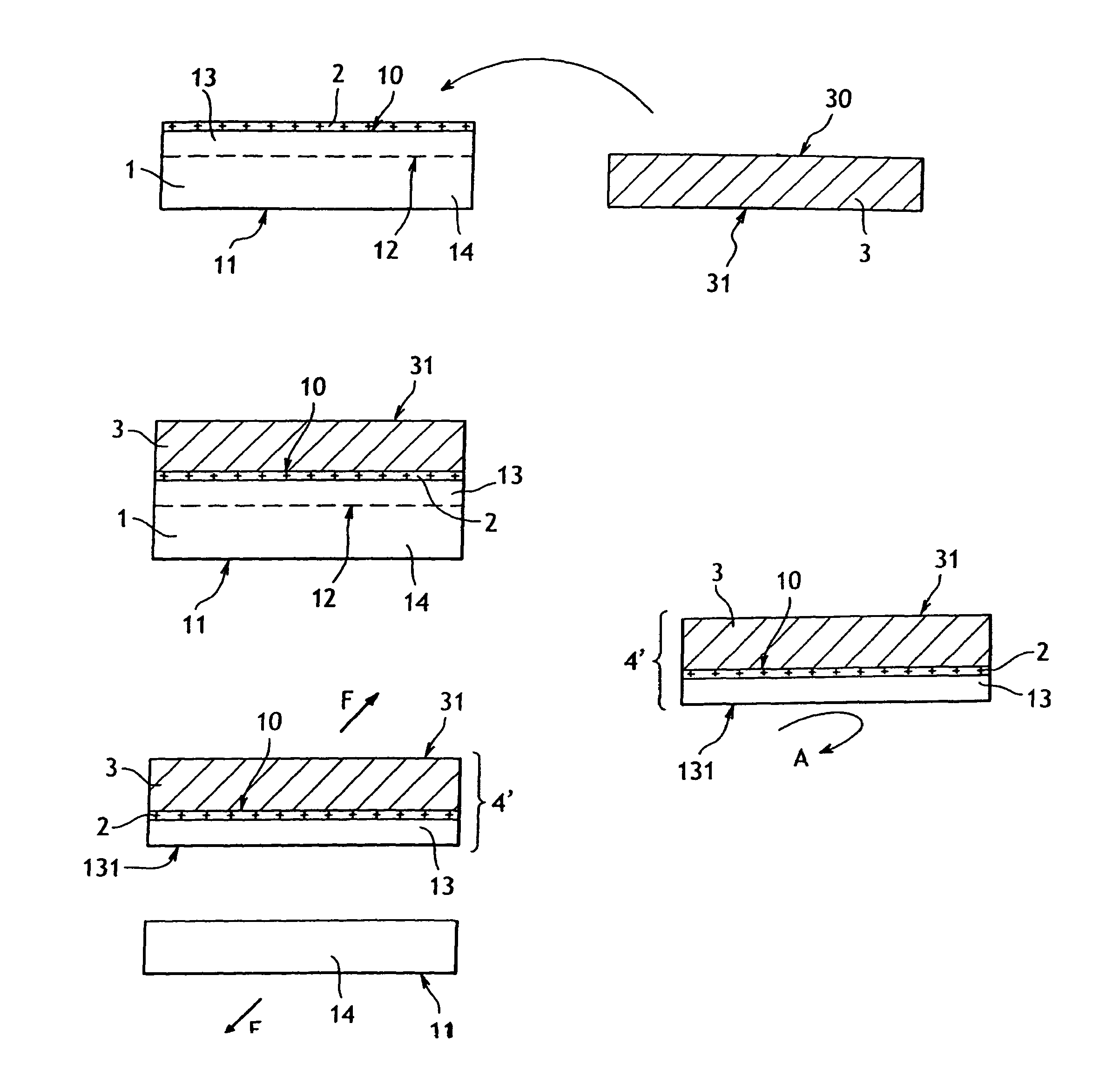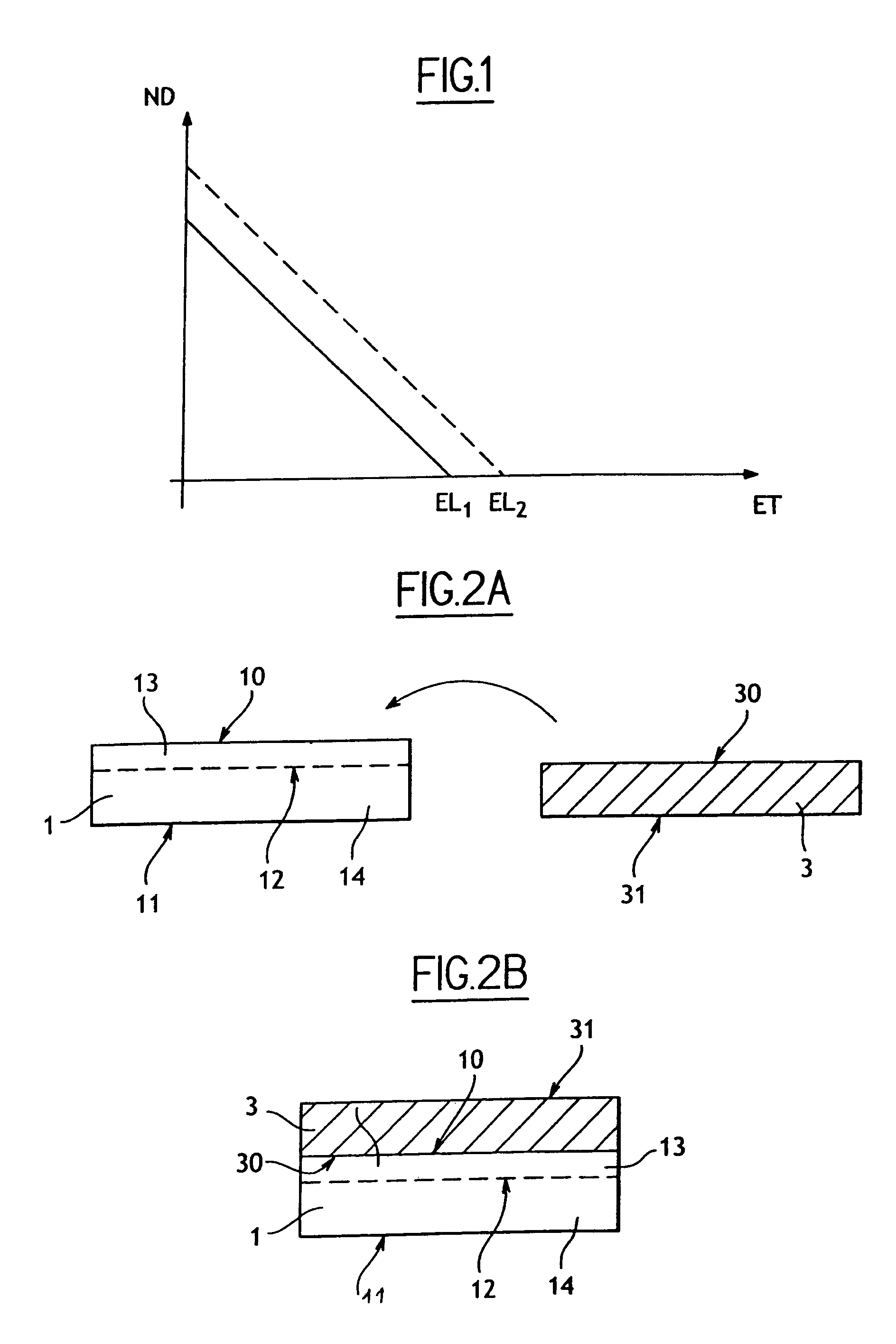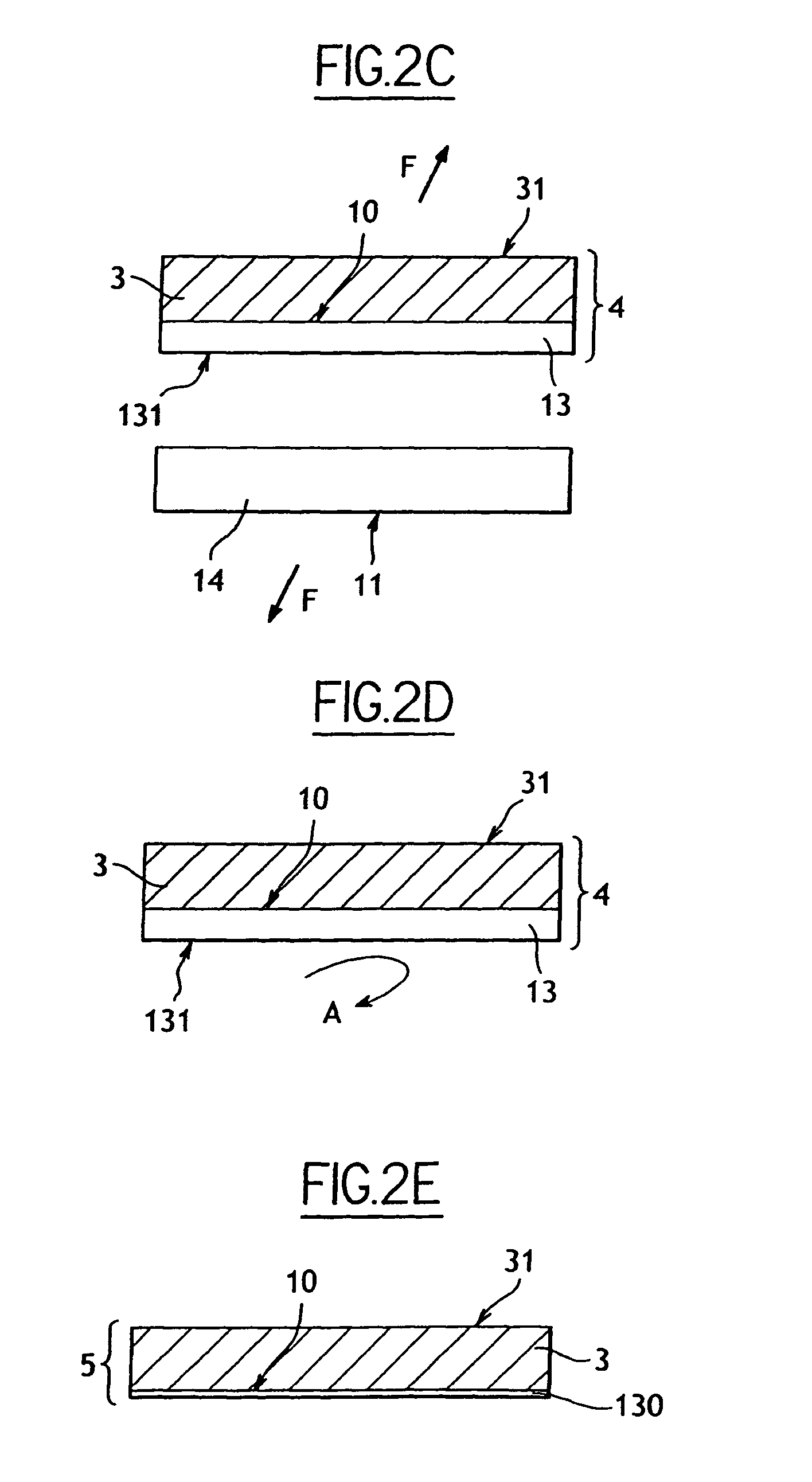Method of producing a semiconductor structure having at least one support substrate and an ultrathin layer
a technology of support substrate and semiconductor structure, which is applied in the direction of semiconductor devices, electrical equipment, basic electric elements, etc., can solve the problems of thin layer not being able to withstand subsequent heat treatment, defects, and appearance of defects, and achieve the effect of reducing thickness
- Summary
- Abstract
- Description
- Claims
- Application Information
AI Technical Summary
Benefits of technology
Problems solved by technology
Method used
Image
Examples
example 1
[0048]Thermal oxidation of a source substrate 1 formed from bulk silicon was carried out to cover it with an intermediate layer 2 of silicon oxide (SiO2) that was about 50 nanometers thick. The zone of weakness 12 was then formed by implanting hydrogen ions H+ using an implantation dose of 8×1016H+ / cm2 and an implantation energy of 210 keV to obtain a useful layer 13 with a thickness of about 1.9 micrometers (1.9 μm). The bulk silicon support substrate was then bonded to the oxide layer 2 by wafer bonding. The remainder 14 of the source substrate 1 was then detached by using a heat treatment of less than 500° C., and the bonding interface was strengthened by using a heat treatment of more than about 1000° C. Finally, a thinning treatment was conducted using polishing and sacrificial oxidation to obtain a final structure 5′ with an ultrathin silicon layer 130 having a thickness of about 50 nm, which could have been reduced further to 20 nm thick if the thinning step was continued.
example 2
[0049]The procedure described above concerning Example 1 was followed, except that the silicon oxide layer 2 was 20 nanometers thick.
example 3
[0050]The procedure described above concerning Example 1 was followed, except that the implantation dose was 7×1016H+ / cm2 and the implantation energy was 160 keV, so that the useful layer 13 was 1.5 micrometers (1.5 μm) thick.
PUM
 Login to View More
Login to View More Abstract
Description
Claims
Application Information
 Login to View More
Login to View More - R&D
- Intellectual Property
- Life Sciences
- Materials
- Tech Scout
- Unparalleled Data Quality
- Higher Quality Content
- 60% Fewer Hallucinations
Browse by: Latest US Patents, China's latest patents, Technical Efficacy Thesaurus, Application Domain, Technology Topic, Popular Technical Reports.
© 2025 PatSnap. All rights reserved.Legal|Privacy policy|Modern Slavery Act Transparency Statement|Sitemap|About US| Contact US: help@patsnap.com



